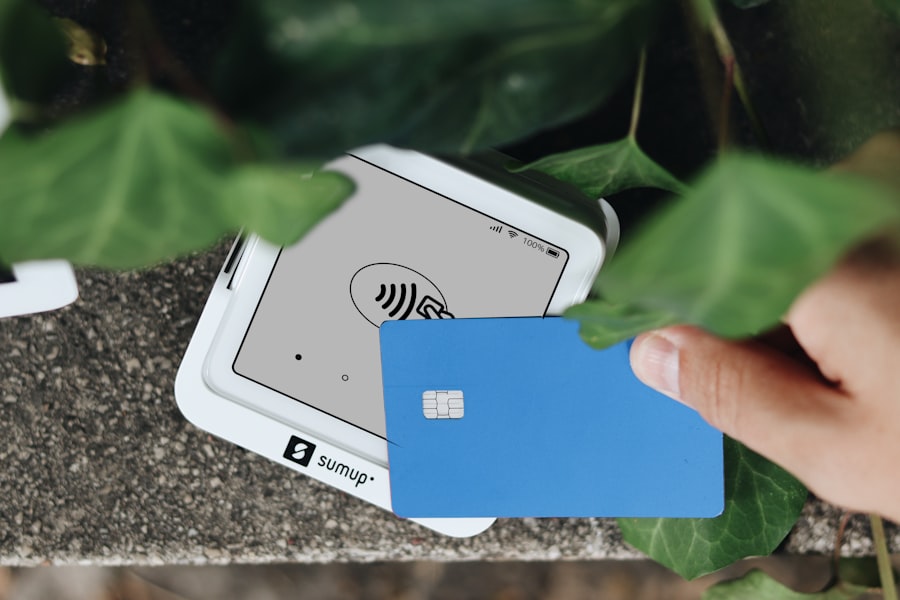Contactless credit cards are a modern evolution in the realm of payment methods, designed to facilitate quicker and more convenient transactions. Unlike traditional credit cards that require physical insertion into a card reader or swiping through a magnetic strip, contactless cards utilize radio-frequency identification (RFID) or near-field communication (NFC) technology. This allows users to simply tap their card against a compatible terminal to complete a purchase.
The convenience of this method has made contactless credit cards increasingly popular among consumers who value speed and efficiency in their financial transactions. These cards typically feature a distinctive symbol, often resembling a series of curved lines, indicating their contactless capability. They are issued by major financial institutions and can be linked to various accounts, including checking and savings accounts, as well as credit lines.
The rise of contactless credit cards has been fueled by the growing demand for seamless payment experiences, particularly in urban environments where time is of the essence. As more retailers adopt contactless payment systems, the prevalence of these cards continues to expand, making them a staple in modern consumer behavior.
How do contactless credit cards work?
The operation of contactless credit cards hinges on the principles of RFID and NFC technology. When a cardholder approaches a contactless payment terminal, the card emits a low-frequency radio signal that communicates with the terminal. This interaction occurs within a very short range, typically just a few centimeters, ensuring that the cardholder must be physically present for the transaction to take place.
The terminal then reads the card’s embedded chip, which contains encrypted information about the cardholder’s account and transaction details. Once the terminal successfully reads the card’s data, it sends a request to the card issuer for authorization. This process is remarkably swift, often taking just a fraction of a second.
Upon receiving approval from the issuer, the transaction is completed without the need for any physical contact between the card and the terminal. This efficiency not only speeds up the checkout process but also reduces the wear and tear on both cards and terminals, as there is no need for physical swiping or insertion.
Are contactless credit cards safe to use?

The safety of contactless credit cards is a topic of considerable discussion among consumers and financial experts alike. One of the primary concerns revolves around the potential for unauthorized transactions, given that these cards can be activated simply by being near a compatible terminal. However, several security measures are in place to mitigate these risks.
For instance, most contactless transactions require a PIN or signature for purchases above a certain threshold, which adds an additional layer of protection against fraud. Moreover, contactless credit cards utilize advanced encryption techniques to safeguard sensitive information. The data transmitted during a transaction is encrypted and often includes dynamic authentication codes that change with each use.
This means that even if someone were to intercept the signal during a transaction, they would not be able to replicate it for future use. Additionally, many card issuers offer zero liability policies, ensuring that consumers are not held responsible for unauthorized charges made with their cards.
Advantages of using contactless credit cards
| Advantages | Description |
|---|---|
| Convenience | Quick and easy transactions without the need to swipe or insert the card |
| Security | Reduced risk of card skimming and fraud due to encrypted data transmission |
| Speed | Faster checkout process compared to traditional chip or swipe methods |
| Hygiene | Minimizes physical contact with payment terminals, promoting cleanliness |
The advantages of using contactless credit cards are numerous and compelling. One of the most significant benefits is the speed at which transactions can be completed. In busy retail environments, where long lines can deter customers, contactless payments allow for quick checkouts, enhancing customer satisfaction and streamlining operations for businesses.
This efficiency is particularly beneficial in settings such as public transportation systems, where passengers can tap their cards to pay fares without slowing down the boarding process. Another advantage is the convenience offered by contactless credit cards. Consumers no longer need to fumble through their wallets or purses to find cash or insert their cards into machines; they can simply tap their card against a reader and be on their way.
This ease of use extends to online shopping as well, where many retailers now offer options for saving payment information securely for future purchases. The integration of contactless technology into mobile wallets further enhances this convenience, allowing users to make payments directly from their smartphones.
Disadvantages of using contactless credit cards
Despite their many advantages, contactless credit cards are not without their drawbacks. One notable concern is the potential for accidental charges. Since these cards can be activated by simply being near a payment terminal, there is a risk that they could inadvertently trigger a transaction if they come into close proximity with an active reader.
This could lead to unintended purchases, particularly in crowded areas where multiple terminals are present. Additionally, while security measures are in place, some consumers remain apprehensive about the possibility of fraud associated with contactless payments. The perception that these cards are more susceptible to theft or unauthorized use can deter individuals from fully embracing this technology.
Furthermore, not all merchants have adopted contactless payment systems, which can limit where consumers can use their cards effectively. This lack of universal acceptance may lead some users to carry traditional payment methods as backups.
How to protect your contactless credit card from fraud

To safeguard against potential fraud when using contactless credit cards, consumers can take several proactive measures. One effective strategy is to keep the card in an RFID-blocking wallet or sleeve. These specialized accessories are designed to prevent unauthorized scanning by blocking radio signals from reaching the card’s chip.
By using such protective gear, cardholders can significantly reduce the risk of accidental charges or data theft. Another important step is to regularly monitor account statements and transaction history for any suspicious activity. Many financial institutions provide mobile apps that allow users to track their spending in real-time, making it easier to identify unauthorized transactions quickly.
If any discrepancies are noticed, it is crucial to report them immediately to the card issuer to mitigate potential losses. Additionally, setting up alerts for transactions above a certain amount can provide an extra layer of security by notifying users of any significant charges made with their card.
Understanding the technology behind contactless credit cards
The technology underpinning contactless credit cards is rooted in RFID and NFC systems, which have revolutionized how we conduct transactions. RFID technology employs electromagnetic fields to automatically identify and track tags attached to objects; in this case, the tags are embedded within the credit card itself. NFC is a subset of RFID technology that allows for two-way communication between devices over short distances—typically less than four inches—making it ideal for secure payment systems.
When a contactless card is tapped against a reader, it generates an electromagnetic field that powers the chip within the card momentarily. This chip then transmits encrypted data back to the reader, which processes the transaction through secure communication channels with financial institutions. The use of dynamic data authentication ensures that each transaction is unique and cannot be reused by fraudsters.
As technology continues to evolve, innovations such as biometric authentication and enhanced encryption methods are likely to further bolster the security and functionality of contactless payment systems.
The future of contactless credit cards
Looking ahead, the future of contactless credit cards appears promising as consumer preferences shift towards more convenient payment methods. The ongoing integration of mobile wallets and digital payment platforms suggests that traditional plastic cards may eventually coexist with virtual alternatives stored on smartphones or wearable devices. As more consumers embrace mobile technology for everyday transactions, financial institutions will likely invest in enhancing security features and user experiences associated with these digital solutions.
Moreover, advancements in technology may lead to even more sophisticated forms of authentication beyond PINs and signatures. Biometric verification methods such as fingerprint scanning or facial recognition could become standard practice for authorizing transactions made with contactless payment systems. As retailers continue to adopt these technologies and improve infrastructure for seamless transactions, we may witness an even broader acceptance of contactless payments across various sectors—from retail and dining to transportation and entertainment—ultimately reshaping how we engage with our finances in an increasingly digital world.
FAQs
What are contactless credit cards?
Contactless credit cards are a type of payment card equipped with a technology that allows for secure and convenient transactions without the need to physically swipe or insert the card into a card reader. Instead, users can simply tap their card on a contactless-enabled terminal to complete a transaction.
How do contactless credit cards work?
Contactless credit cards use radio-frequency identification (RFID) or near-field communication (NFC) technology to transmit payment information wirelessly to a contactless-enabled terminal. When a contactless credit card is tapped on the terminal, the card and the terminal communicate to securely process the payment.
Are contactless credit cards safe?
Contactless credit cards are designed with security features to protect against unauthorized use. They use encryption and tokenization to protect payment information, and transactions are typically subject to the same fraud protection measures as traditional credit card transactions. Additionally, contactless transactions usually have a maximum transaction limit to prevent unauthorized use in case the card is lost or stolen.
What are the benefits of using contactless credit cards?
Contactless credit cards offer several benefits, including faster and more convenient transactions, reduced physical contact with payment terminals, and enhanced security features. They also provide a seamless payment experience for users, especially in environments where speed and efficiency are important, such as public transportation and retail settings.









